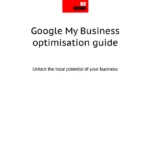- 1. The power of content for UK websites
- 2. Defining a target audience for your content strategy
- 3. Content planning and keyword research
- 4. Types of website content
- 5. Content creation best practices
- 6. Content promotion and distribution
- 7. Measuring content strategy performance
- 8. Where to go from here?
- 9. Help for your content strategy is at hand
- 10. Further reading on content strategy
In the bustling digital landscape of the United Kingdom, a robust content strategy is a fundamental necessity for any business aiming for online success. It acts as the magnetic force that draws potential customers to your website, builds your brand’s authority, and ultimately drives tangible business results. Without a well-defined content plan, even the most beautifully designed UK website can struggle to capture attention or convert visitors into loyal customers. An effective strategy ensures that every piece of content you create serves a clear purpose, aligns with your business goals, and resonates deeply with your target audience. This article will guide you through the essential elements of developing a powerful content strategy, from understanding your audience to measuring your triumphs, all designed to fuel your UK website growth.
The power of content for UK websites
Content is the very heartbeat of a thriving UK website. It’s what transforms a static online presence into a dynamic, interactive experience for your visitors. Think of your website as a digital storefront; compelling content is the window display that entices passersby, and the helpful sales assistant who answers their questions and guides them to what they need.
For businesses operating within the UK, high-quality, relevant content serves multiple critical functions. Firstly, it significantly enhances your search engine visibility. Search engines, like Google, prioritise websites that consistently publish valuable and authoritative content. This means more organic traffic to your site, which is essentially free, highly targeted visitors.
Secondly, content builds trust and credibility. When you provide insightful articles, practical guides, or helpful videos, you position your brand as an expert in its field. This expertise fosters confidence among your audience, making them more likely to trust your products or services. Furthermore, engaging content encourages visitors to spend more time on your site, reducing bounce rates and signalling to search engines that your website offers a valuable user experience. This deeper engagement often translates into higher conversion rates, turning casual browsers into committed customers. Ultimately, a strategic approach to website content can differentiate your business in a competitive UK market, establishing you as a thought leader and a go-to resource for your audience. The force behind engaging content is a well executed content strategy.
Defining a target audience for your content strategy
Before you even think about writing a single word, understanding who you are writing for is paramount. Your content strategy must be audience-centric. Who are your ideal customers in the UK? What are their demographics, such as age, location, and income? More importantly, what are their pain points, challenges, and aspirations? What questions do they frequently ask? What problems are they trying to solve? Defining your target audience in detail is the bedrock of creating truly effective content.
A highly effective method for this is developing detailed buyer personas. These are semi-fictional representations of your ideal customers, built from market research and real data about your existing customers. Give your personas names, job titles, and even a brief backstory. Consider their online behaviour: where do they spend their time online? What websites do they visit? What social media platforms do they use? For example, if you’re a B2B software company targeting small businesses in Gloucester, your content might focus on efficiency improvements or cost-saving strategies, and you might target localised keywords for Gloucestershire.
Conversely, a travel agency aiming at young professionals across the UK might produce content around budget-friendly getaways or unique cultural experiences. The more precisely you can define your audience, the more tailored, relevant, and impactful your content will be and the more targeted your content strategy. Taking the time and effort to develop and implement a content strategy helps to ensure your content genuinely resonates and solves your audience’s specific needs.
Content planning and keyword research
With a clear understanding of your audience, the next crucial step is strategic content planning. This involves mapping out the topics you’ll cover, the questions you’ll answer, and the problems you’ll solve through your content. It also dictates the formats your content will take. A key component of this planning phase is in-depth keyword research. Keywords are the terms and phrases your target audience uses when searching online. Identifying these keywords is like getting a direct line into your audience’s mind, revealing exactly what information they are seeking.
Utilise various keyword research tools to discover relevant terms related to your industry and specific business. Look beyond just high-volume keywords; while these can bring significant traffic, they are often highly competitive. Also, focus on long-tail keywords – these are longer, more specific phrases (e.g., “best eco-friendly packaging suppliers UK” rather than just “packaging”). Although long-tail keywords typically have lower search volumes, they often indicate higher search intent, meaning the user is closer to making a purchase or taking a specific action. Integrate these keywords naturally and contextually throughout your content, in headings, subheadings, and the body text. The aim is to provide genuine value and answer user queries comprehensively, not to stuff keywords unnaturally into your writing.
A well-organised content calendar is indispensable at this stage, allowing you to plan your content pipeline, assign responsibilities, and maintain a consistent publishing schedule, ensuring a steady stream of fresh, engaging website content is fundamental to your content strategy.
Types of website content
Your website can serve as a versatile platform for a multitude of content formats, each designed to achieve different objectives and engage various segments of your audience. Blogs remain a cornerstone of a good content strategy. They are excellent for sharing industry insights, company news, and practical tips, positioning your brand as an expert.
Articles, similar to blog posts but often more in-depth, can delve into complex topics, providing comprehensive guides or analyses.
Landing pages are purpose-built content assets designed to capture leads or drive specific actions, such as signing up for a newsletter or downloading a resource.
Infographics are powerful visual tools for presenting complex data or information in an easily digestible and shareable format.
Videos, including tutorials, product demonstrations, or interviews, are increasingly popular for their dynamic engagement capabilities and ability to convey a lot of information quickly.
E-books and whitepapers are longer-form, authoritative pieces of content that demonstrate deep expertise and can be used as lead magnets.
Case studies showcase your past successes with clients, providing tangible proof of your capabilities and building strong social proof.
Moreover, interactive quizzes, online tools, or webinars can provide unique value and foster deeper engagement. The key to explode your content strategy is to diversify your content formats. That way, you can cater to different learning styles and preferences within your UK audience. Meanwhile, you ensure your website content remains fresh and compelling.
Content creation best practices
Crafting high-quality website content requires more than just good writing. It needs strategic thinking and adherence to best practices that enhance readability, engagement, and Search Engine Optimisation. Writing content for a website is not the same as writing in other fields like journalism or business. Always strive for clarity and conciseness in your writing.
In general, your language should be natural, easy to understand, and avoid unnecessary jargon. You should maintain a voice that aligns with your brand’s personality, and you should strategically adopt that voice for your content.
In addition, there are a few technical pointers to help your content strategy. While these are not hard-and-fast, they are principles and practices that will support your content strategy:
- A significant portion of your sentences should employ simple sentence structures, avoiding overly complex clauses that can hinder comprehension.
- Very few of your sentences should exceed 20 words. This ensures your content remains digestible and accessible to a broad audience. It also helps to ensure snippets of your content can be consumed by AI-generated search results.
- Ensuring grammatical accuracy and impeccable spelling is essential; errors can undermine your credibility and harm your search engine rankings.
- Use headings and subheadings effectively to break up large blocks of text, improving readability.
- Incorporate relevant visuals, such as high-quality images, charts, and videos, to make your content more appealing and to illustrate complex points.
- Furthermore, every piece of content should include a clear and compelling call to action (CTA). This guides your readers on what to do next.
- Additional secondary calls to action can provide supporting actions for those not ready to commit. These should have lesser precedence within the content structure.
- Using transition words ensures a smooth flow of ideas, making your content more engaging and easier to follow.
Content promotion and distribution
Using your content strategy to creating brilliant content is only half the battle. Ensuring it reaches your target audience is equally critical. A robust content promotion and distribution strategy amplifies your efforts and maximises your content’s impact. Begin by sharing your newly published content across all your relevant social media platforms. Craft engaging snippets and include direct links to your articles, adapting your message for each platform’s unique audience and format.
Email marketing remains one of the most effective channels for content distribution. Curate your latest blog posts, articles, and resources into compelling newsletters that you send to your subscriber list. This not only drives traffic back to your website but also reinforces your brand’s value to your existing audience.
Consider exploring paid promotion opportunities, such as social media advertising or sponsored content, to extend your reach beyond your organic audience. Collaborating with complementary businesses or industry influencers can also expose your content to new, relevant audiences, leveraging their established credibility.
Participating in online communities, forums, or relevant groups where your target audience congregates can also be an excellent way to share your expertise and direct interested users to your website content. The objective here is to strategically disseminate your valuable content across every viable channel, ensuring it captures the attention of as many potential customers as possible, thereby significantly boosting your UK website growth.
Measuring content strategy performance
The final, yet continuous, stage of any effective content strategy is measuring its performance. This analytical approach provides invaluable insights into what’s working, what isn’t, and where adjustments need to be made. Utilise web analytics tools, such as Google Analytics, to monitor key metrics. Track your website traffic: which content pieces are generating the most visits? Where are your visitors coming from?
Examine engagement metrics like time on page, bounce rate, and pages per session. High time on page and low bounce rates suggest your content is engaging and relevant. Monitor conversion rates associated with your content: are your calls to action effective? Is the content driving leads or sales as intended?
Pay attention to social shares and backlinks, as these indicate your content’s popularity and authority. Additionally, track your keyword rankings to see how your content is performing in search results. By regularly reviewing these metrics, you can identify patterns, understand audience behaviour, and pinpoint opportunities for improvement. This iterative process of creating, promoting, and analysing allows you to continuously refine your content strategy, ensuring it remains optimised for maximum impact and sustained UK website growth.
Where to go from here?
Your content strategy is only as good as you. Anyone can write a few ideas into a spreadsheet and let them sit buried somewhere on your hard drive, or in your cloud storage. Never to see the light of day again.
However, that is never going to be the road to online success. Having developed your content strategy, you then need to implement it. And while you are implementing it, you must review it and discover where it is resonating with your audience, and where it is falling short. Tweak it, bolster those areas that are weak, strengthen those parts that are working. And keep modifying and reassessing it: in short, make it a central aspect of your content creation.
Help for your content strategy is at hand
Develop a powerful content strategy. Contact Redcentaur for expert content planning.
And you can download our FREE content calendar template to get started with your content strategy right now.
Further reading on content strategy
Website development UK: A complete guide for businesses
5 key steps to planning your perfect website
Boosting conversions: Calls to Action that work (coming soon)





